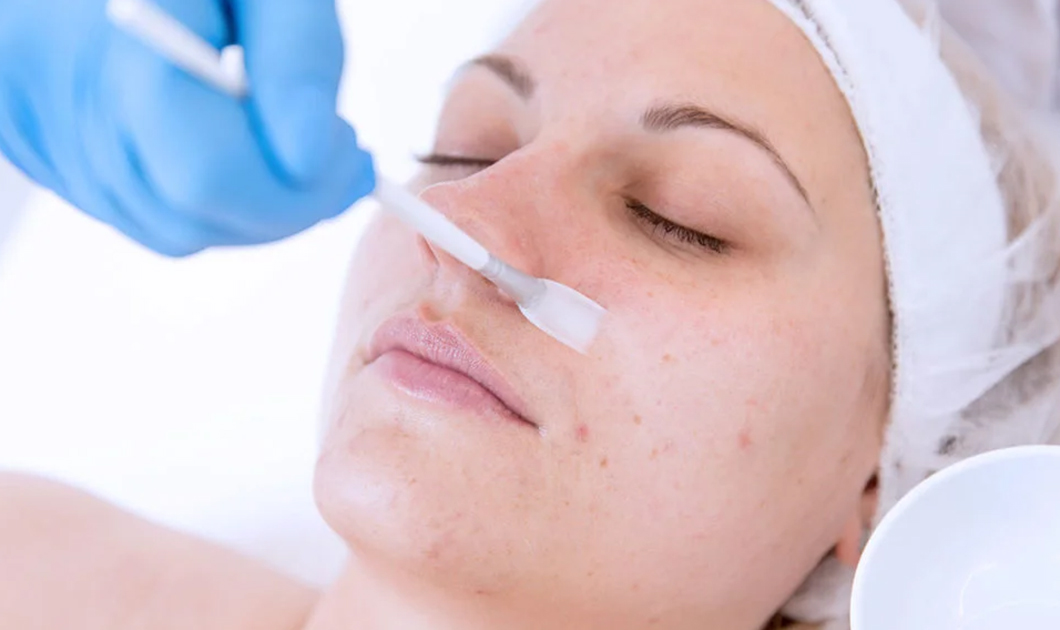Transform Your Skin with Chemical Peels at The Wellness Lab, Qatar

. We are happy, You are here .
What Are Chemical Peels?
Chemical peels are innovative skin-resurfacing procedures that apply a specialized solution to strip away damaged outer layers of your skin. This gentle exfoliation paves the way for fresh, healthy skin to emerge. As a result, you’ll notice a smoother, more even-toned complexion. Whether you’re battling aging signs, acne marks, or sun-induced discoloration, chemical peels provide a tailored solution.
Why Choose Chemical Peels? The Benefits Unveiled
Even Out Hyperpigmentation
Qatar’s intense sun can leave dark spots or uneven tone. Fortunately, chemical peels lift away these damaged layers, encouraging new, uniformly pigmented skin to surface. This is perfect for restoring clarity and brightness.
Smoother Texture and Anti-Aging
Moreover, peels smooth rough patches and shrink enlarged pores by clearing dead skin. They also boost collagen production, softening fine lines and firming skin for a youthful glow.
Enhanced Skincare Results
Post-peel, your skin absorbs serums and moisturizers more effectively. Therefore, your daily regimen delivers amplified results. Plus, peels are safe and customizable for all skin types at The Wellness Lab.
Our Chemical Peel Offerings at The Wellness Lab
Peel Types
We offer a variety of chemical peels, each designed with precision:
Glycolic Acid Peel
New to peels? This gentle option uses alpha-hydroxy acid to slough off dead skin, smoothing texture and fading fine lines. It’s quick with minimal downtime—ideal for busy schedules.Salicylic Acid Peel
For oily or acne-prone skin, this peel cuts through oil and unclogs pores, reducing redness and preventing breakouts. The result is a balanced complexion.TCA Peel
For deeper issues like wrinkles or sun damage, the TCA peel stimulates collagen for firmer, rejuvenated skin. Expect peeling, but the payoff is dramatic.
Peel Depths Explained
Superficial Peel: Refreshes the outer layer with minimal recovery.
Medium Peel: Targets outer and middle layers, with about a week of downtime.
Deep Peel: Addresses severe concerns, with up to two weeks of healing.
Treatment Process
Your journey starts with a consultation at The Wellness Lab. Our aestheticians evaluate your skin and recommend the ideal peel. Here’s how it unfolds:
Prep: Your skin is cleansed to remove oils.
Application: The peel solution is applied, with mild tingling possible.
Duration: It takes about 30 minutes, timed to your peel type.
After: You may resume your day or recover for a few days, depending on the peel.
Post-Peel Care: Lock in Your Results
To keep your skin glowing, follow these tips:
Sun Protection: Use high SPF sunscreen—crucial in Qatar’s climate.
Hydration: Apply a gentle moisturizer to support healing.
Gentle Care: Avoid harsh scrubs until your skin recovers, per our advice.
With proper care, your results will last longer.
Frequently Asked Questions About Chemical Peels
Curious? Here are answers:
Does it hurt? Most feel a slight tingle. Deeper peels might be intense, but discomfort is manageable.
How many treatments? Light peels may need a series, while deeper ones often work in one go.
Makeup after? Wait 24 hours to let your skin heal.
Side effects? Expect redness or peeling, which fades with care.
Why The Wellness Lab in Qatar?
Nestled in Qatar, The Wellness Lab blends cutting-edge skincare with a soothing environment. Our team’s expertise ensures your peel is safe, effective, and customized. In a sunny region, our treatments restore and protect your natural beauty.
Ready to reveal your best skin? Schedule your consultation today and let chemical peels transform your look.
 After
After  Before
Before